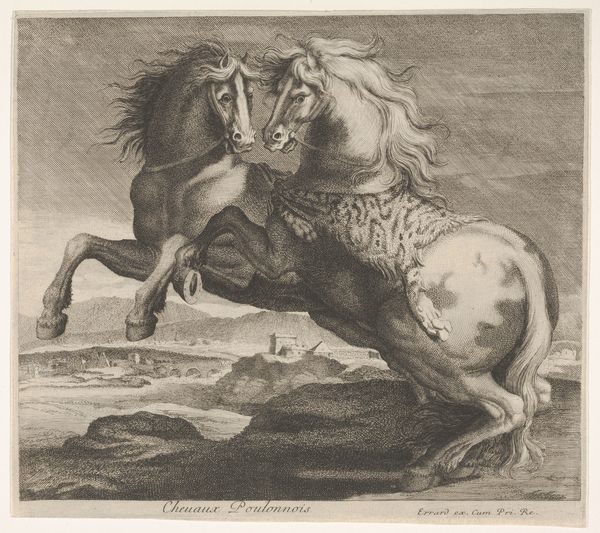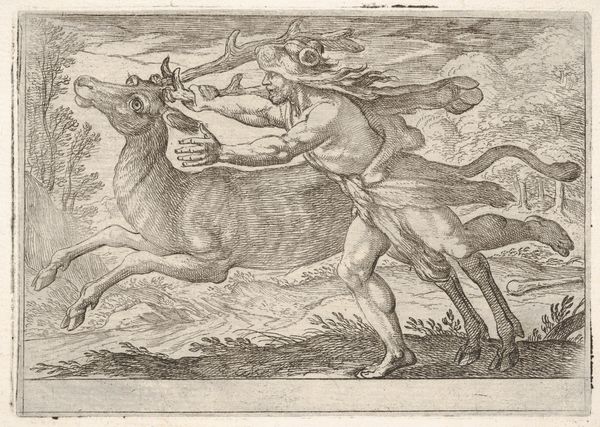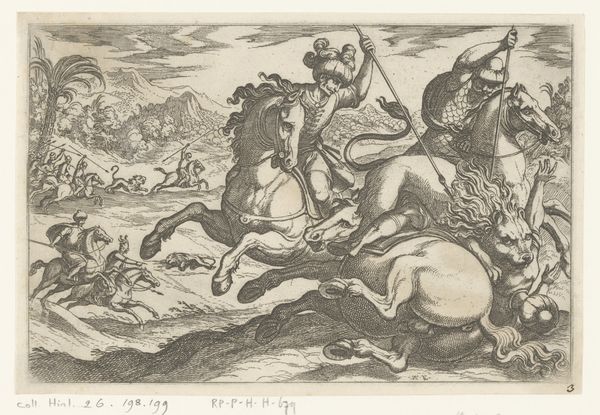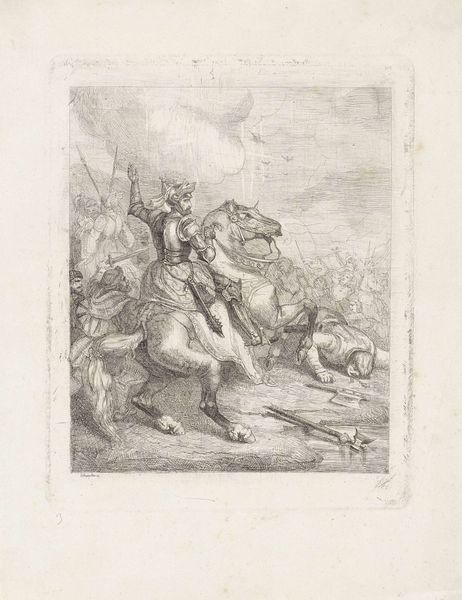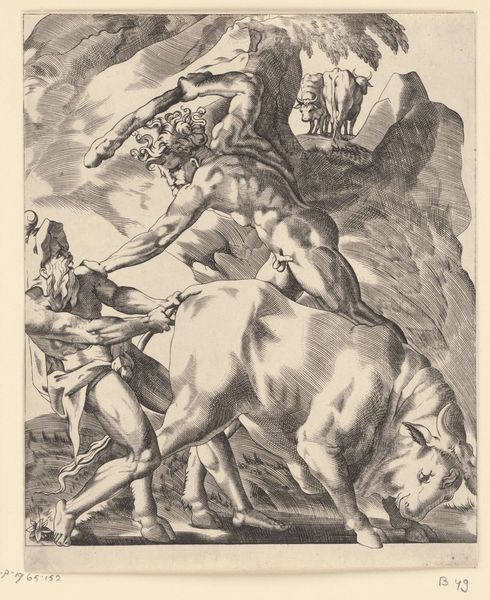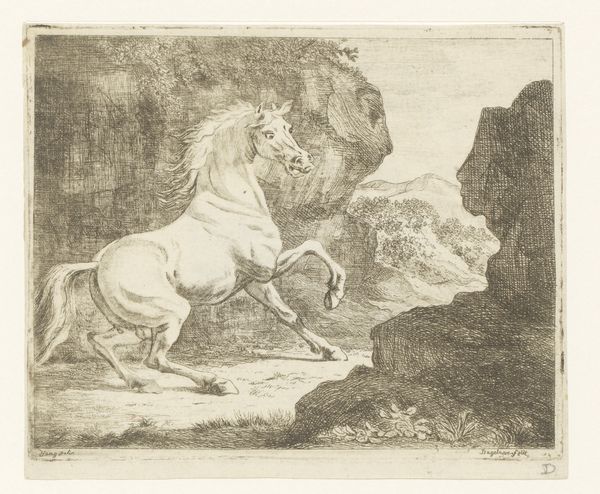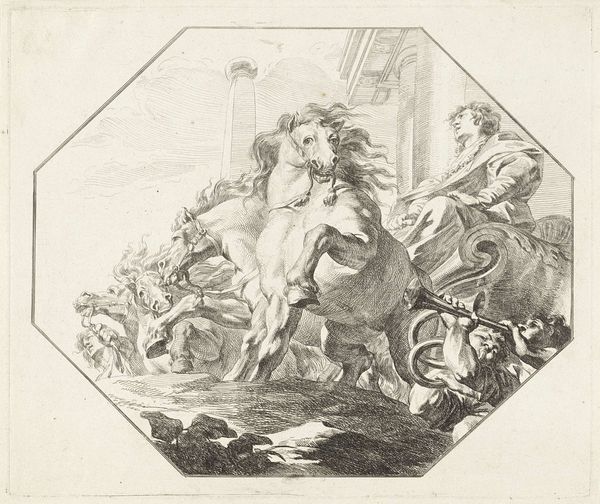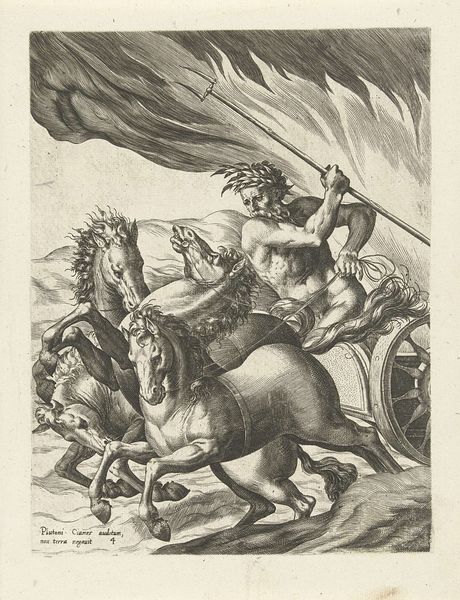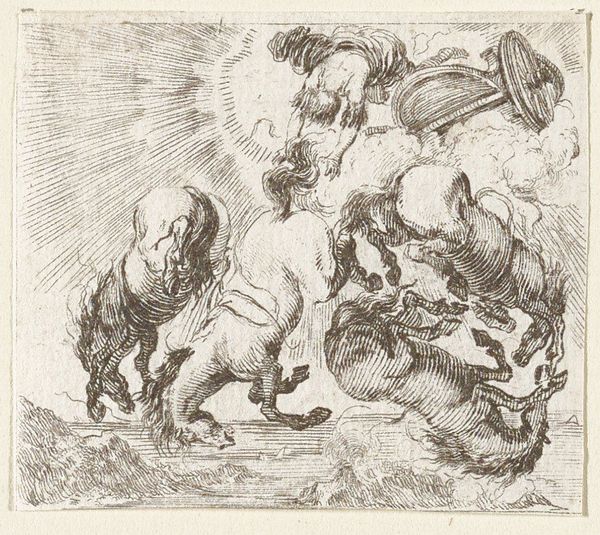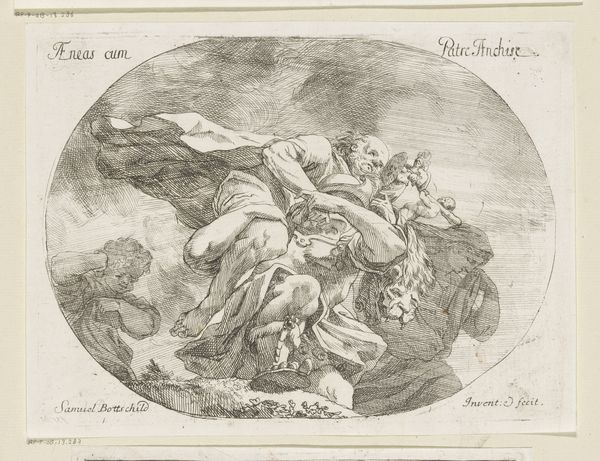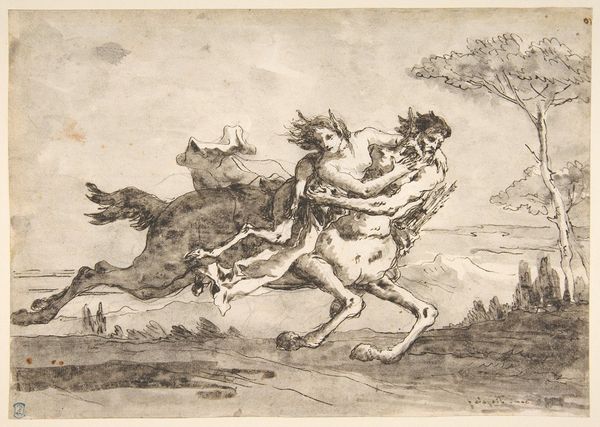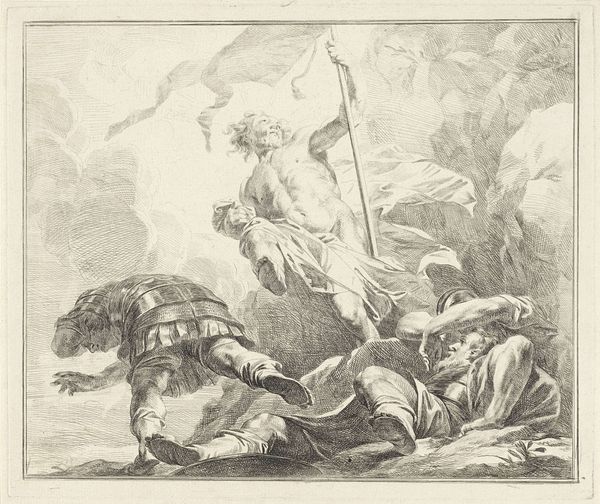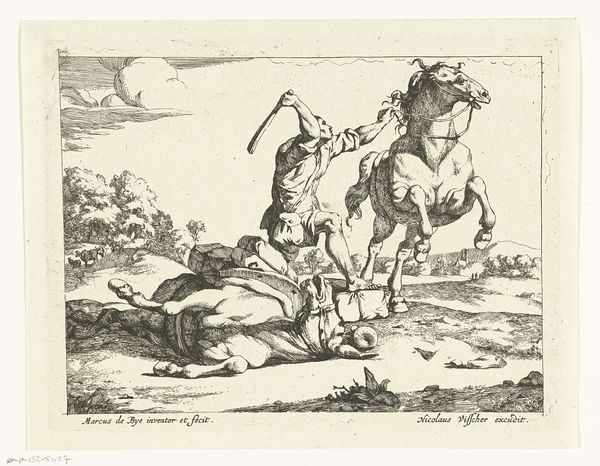
engraving
#
baroque
#
figuration
#
line
#
history-painting
#
engraving
Dimensions: height 338 mm, width 402 mm
Copyright: Rijks Museum: Open Domain
Editor: Here we have Jacob de Wit’s engraving, "The Ascension of Elijah," sometime between 1705 and 1754. The energy radiating from this scene is just incredible; it feels like a snapshot of pure divine power. The chariot, the horse… What exactly am I looking at, symbolically? Curator: It’s a rip-roaring ride into the heavens, isn’t it? Imagine being Elijah, whisked away in a chariot of fire! De Wit captures that drama perfectly, all swirling clouds and frantic energy. What strikes me is how he uses the Baroque style - with all its flair – to visualize something so…intangible. Almost comical, in a strange way? Is that intentional, do you think? Editor: Comical? That's unexpected. The intensity of Elijah’s expression seemed fairly serious to me. Curator: But that very intensity, contrasted with the flamboyance of the chariot, makes me chuckle! It's theatrical. De Wit is not just illustrating a biblical scene. He's staging it, almost like a play. Think about it: how often do we literally picture ascension? De Wit uses dramatic lines to create form, almost like sculpture on paper. The history paintings were often about teaching moral lessons, right? Editor: Absolutely. So the theatricality drives home the moral weight? Like, "be good, or miss out on the heavenly chariot?" Curator: Precisely! Although perhaps not as bluntly stated! And it reminds me that even religious art can have a wink and a nudge. Jacob might have even been poking fun at the drama behind faith. Editor: I see what you mean. The spectacle itself becomes a way to engage with faith, whether devout or questioning. Thanks. Curator: My pleasure. Art invites questions; answers are optional, in the best cases!
Comments
No comments
Be the first to comment and join the conversation on the ultimate creative platform.
